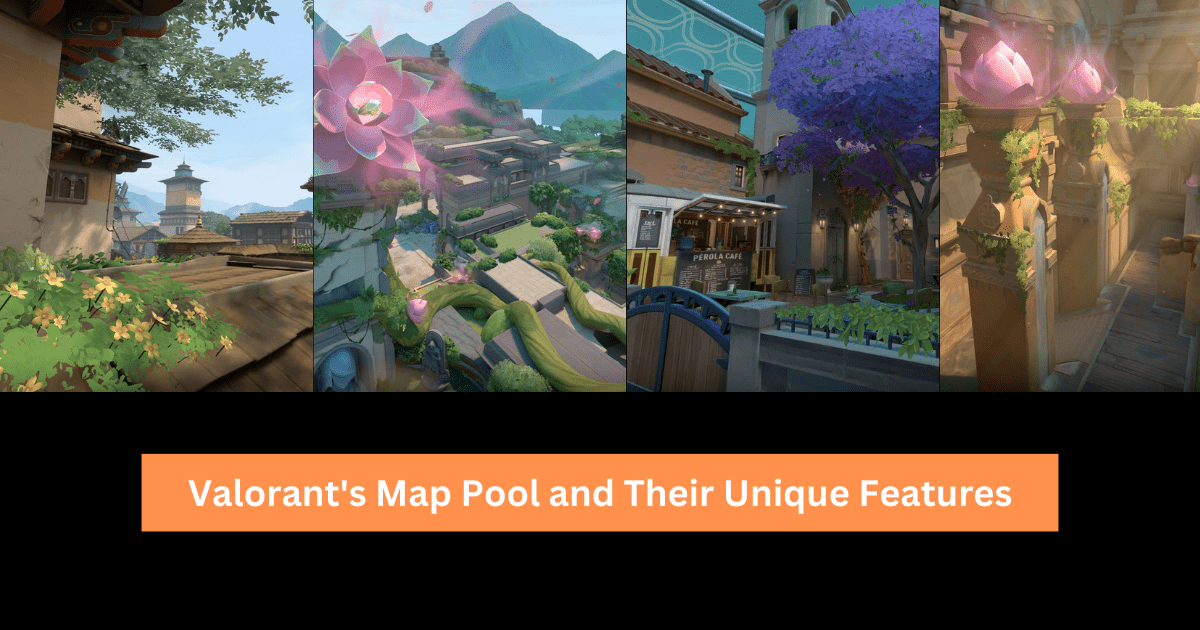The Art of Valorant Map Design: A Guide for Players
In the exciting world of competitive gaming, Valorant has emerged as one of the most popular first-person shooter games. One of the key factors contributing to its success is the impeccable design of its maps. In this comprehensive guide, we will analyze the intricate details and strategies behind Valorant’s map design, providing valuable insights to help you gain an upper hand in every match.
The Importance of Map Design in Valorant Competitive Games
Map design forms the foundation of the entire gameplay experience in Valorant. The developers have taken great care to craft visually appealing maps that are also strategically balanced. Each map presents a unique challenge, forcing players to adapt their tactics accordingly. Understanding map design can give you a competitive edge and contribute effectively to your team’s success.
Valorant’s Map Pool and Their Unique Features

Valorant boasts a diverse map pool, each with its own distinct characteristics. These maps include Bind, Haven, Ascent, Split, and Icebox. It is crucial for players to understand the unique features of each map in order to excel in the game. Let’s take a closer look at what sets these maps apart:
- Bind: Known for teleporters that enable quick rotations.
- Haven: Distinguished by its three bomb sites, it presents a strategic challenge.
- Ascent: Offers open spaces and tight corridors, demanding versatile gameplay.
- Split: Notorious for its verticality, requiring a strong emphasis on map control.
- Icebox: Features ziplines and multiple heights, adding complexity to the gameplay.
- Pearl: Similar to Split, players need to emphasize map control.
- Lotus: Open spaces with hidden corners and tight corridors, demanding versatile approaches.
Understanding Map Control in Valorant and Its Impact on Gameplay
Map control is crucial for success in Valorant. Controlling key areas of the map allows your team to dictate the pace of the game. Chokepoints, sightlines, and agent abilities play a major role in competing for control. A well-coordinated team that establishes map control is more likely to secure victory.
The Role of Chokepoints and Sightlines in Valorant Map Design
Chokepoints and sightlines are critical aspects of map design in Valorant. Chokepoints are narrow areas where engagements frequently occur. Mastering the control and exploitation of these chokepoints is essential for map dominance. Sightlines, on the other hand, are the lines of sight that players have across the map. Effective use of sightlines can turn the tide of a match, allowing players to pick off opponents from a safe distance.
Strategic Positioning and Map Awareness in Valorant
Strategic positioning on the map is an art that skilled players master. It involves controlling chokepoints and sightlines, as well as utilizing natural cover and angles to gain an advantage. Map awareness is another crucial skill that involves keeping track of your team’s positioning and predicting enemy movements. Both of these factors can make a significant difference in securing a win.
Common Tactics and Strategies for Each Map in Valorant
Each map in Valorant requires a unique set of tactics and strategies. Understanding and adapting to these nuances is vital for success. For example, mastering teleporter usage is key on Bind, while Haven demands adaptability due to its three bomb sites. Ascent requires flexibility in approach, Split emphasizes vertical gameplay, and Icebox adds complexity with ziplines.
Analyzing the Balance and Symmetry in Valorant’s Maps
Balance and symmetry are integral components of Valorant’s map design. The maps are created with balance in mind to ensure a fair playing field for both attacking and defending teams. This promotes a competitive and enjoyable gaming environment.
The Evolution of Valorant’s Map Design and Future Updates
Valorant’s map design is continuously evolving, with regular updates and improvements. Staying updated on map changes and new features is essential for players seeking to maintain a competitive edge. The developers are committed to ensuring engaging and balanced gameplay through constant updates.
Now that you have a deep understanding of Valorant’s map design, it’s time to put your knowledge into action. Stay informed, practice, and watch your gameplay soar to new heights. Good luck on your journey to becoming a Valorant legend!
Frequently Asked Questions (FAQs)
Q: How does map design impact gameplay in Valorant?
A: Map design in Valorant greatly influences strategy, tactics, and the overall gaming experience.
Q: What are the key elements of map control and positioning in Valorant?
A: Chokepoints and sightlines play a crucial role in determining map control and strategic positioning.
Q: Why is it essential to understand the unique features of each Valorant map?
A: Knowing the unique features of each map allows players to adapt their strategies effectively.
Q: How often does Valorant update its maps, and why is this important?
A: Valorant frequently updates its maps to keep the gameplay fresh and balanced, making it essential to stay updated.
Q: What is the key to success in Valorant, as discussed in the conclusion?
A: Success in Valorant is closely tied to understanding map design and keeping pace with the game’s evolving features.
If you have any more questions or need additional information, feel free to ask in the comment section. Stay tuned for more exciting updates!
